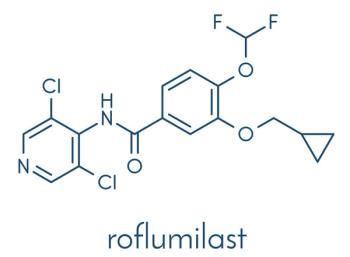
Bullous Pemphigoid: An Autoimmune Blistering Disorder
In older persons, tense blisters such as these are most likely bullous pemphigus, an autoimmune blistering disease. Biopsy as well as direct and indirect immunofluorescent tests may be needed to exclude other blistering diseases, such as pemphigus and epidermolysis bullosa.
A 61-year-old man sought medical attention when tense blisters started to develop on his abdomen, groin, thighs, and forelegs. He was in good health, and took no medications.
Key point: In the older age group, the most likely diagnosis is bullous pemphigoid, an autoimmune blistering disorder. Biopsy and both direct and indirect immunofluorescent tests (which detect and characterize circulating autoantibodies) may be necessary to exclude other blistering diseases, which appear similar in morphology: pemphigus and acquired epidermolysis bullosa. Oral lesions may also be present, although blisters in this area usually rupture early, leaving behind shallow, painful erosions.
Treatment: Application of ultra-high potency topical corticosteroids is indicated. If resolution is not prompt, then systemic corticosteroids, with or without immunosuppressive drugs (such as mycophenolate mofetil, azathioprine, or methotrexate) may be employed.
Note: Adequate treatment is critical because the erosions, which follow blister rupture, are excellent portals of entry for bacteria. Sepsis is the usual cause of death.
Newsletter
Enhance your clinical practice with the Patient Care newsletter, offering the latest evidence-based guidelines, diagnostic insights, and treatment strategies for primary care physicians.




















































































































































































































































































